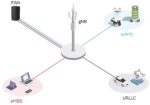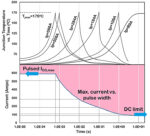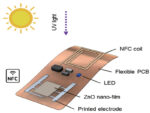Hollow core fiber (HCF) optical sensors are used in applications including Li-ion battery research and development (R&D), robotic arms, civil engineering infrastructural health monitoring, and biosensing. Some of the attributes of HCF optical sensors are small footprints, non-conductance, chemical stability, and high dynamic ranges. In the case of activities like Li-ion R&D, HCFs can be […]
Featured
It’s LEAP-in time again: 2024 LEAP Awards now open for nominations
The LEAP Awards (Leadership in Engineering Achievement Program) celebrates the most innovative and forward-thinking products serving the design engineering space. This dynamic competition honors the most innovative engineered products/components across several of our flagship brands: Design World, Fluid Power World, EE World, and Engineering.com. Submissions for the 2024 LEAP Awards program are being accepted starting […]
How do 5G eMBB and FWA data services compare?
Fixed-wireless access is a special use case of enhanced mobile broadband, one of the three use cases specified for 5G. FWA brings different challenges for deployment than eMBB.
Battery and charging innovations driving electrification
The urgency of mitigating climate change and reducing greenhouse gas emissions has prompted businesses to adopt more sustainable transportation solutions, particularly electric vehicles (EVs). Lithium-ion batteries (LIBs) are at the forefront of electrification. McKinsey predicted that the entire LIB chain, from mining through recycling, could grow by over 30% annually from 2022 to 2030, reaching…
Choose a 5G base station’s PA bias control circuit
Bias control of PAs is crucial to ensure optimum radio performance under all conditions. Current sensing and temperature sensing provides the feedback needed to control the PA bias. The choice of sensing and biasing circuits brings design trade-offs. 5G base station power amplifiers (PAs) need biasing using a separate bias controller to maintain optimum performance…
PSMA launches “Global Energy Efficiency Awards” to recognize impactful innovations on Earth Day 2024
To highlight the critical impact of improvements in energy efficiency on reducing global climate change, the Power Sources Manufacturers Association (PSMA) has chosen today – Earth Day 2024 – to announce the call for nominations for its “Global Energy Efficiency Awards.” Nominations will be accepted from April 22 until Sept. 3, 2024. PSMA, co-sponsor of […]
What is intermodulation, and is it good or bad? Part 2
A mixer can upconvert and downconvert a modulated signal with no loss of baseband information. Part 1 of this series described intermodulation resulting from the combining of two or more sinusoidal signals through a nonlinear device such as the mixer in Figure 1. The mixer’s output is the product of its two inputs, and its […]
How to quantify pulse current capability of SiC FETs
Silicon Carbide FETs go beyond silicon to extend reach to high pulse currents in power conversion applications. Wide bandgap (WBG) semiconductor devices, such as Silicon Carbide (SiC) field-effect transistors (FETs), are renowned for their minimal static and dynamic losses. Beyond these attributes, this technology can endure high pulse currents, proving particularly advantageous in applications like […]
How are zinc oxide (sunscreen) WBG nanomaterials used in sensors?
Zinc oxide (ZnO) is a common ingredient in sunscreen lotions. Less well-known is the fact that it’s also a wide band gap (WBG) semiconductor (3.4 eV). As a nanomaterial, ZnO is being used to develop a wide variety of sensor technologies. Sensor applications for ZnO include health monitoring, chemical sensing, biomedical, and environmental sensors. Some […]
OFC 2024: It’s AI or die
Today’s data rates are already too slow, and so are tomorrow’s. Expect more complaints about slow networks in 2025.











